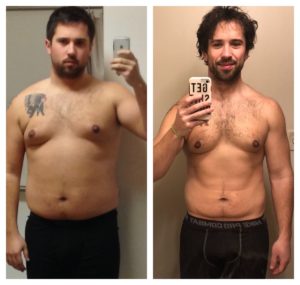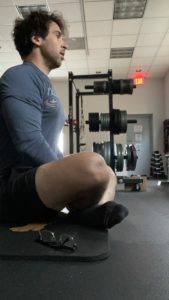Guest Author: Jason Lewis
Recovering from a drug or alcohol addiction involves more than just getting clean. To set yourself up for a successful life after treatment, you need to reclaim your body and mind. Allowing fitness and self-care to play a role in your recovery is an effective way to do this. By integrating healthy habits into your daily routine, you can increase energy, reduce stress, and set yourself on the road to a happy, substance-free life.
Establish an Exercise Routine
Regular exercise provides you with an outlet for many of the negative emotions that accompany the recovery process, including pent-up anger, stress, and depression. It can also help you bounce back from the physical damage you incurred during active addiction with a myriad of long-term health benefits:
- Better immunity to viruses
- Increased bone density and muscle strength
- Improved weight control
- Reduced pain
- Better cardiovascular health
- Decreased risk of cancer and diabetes
To reap these benefits, commit to a regular fitness routine that allows you to stay within your target heart rate. Being consistent with your workout regime is the most important predictor of success, so commit to working out four or five times a week. Since the form of exercise is not as important as consistency, choose an activity, such as biking or yoga, that you enjoy and are likely to continue.
In today’s digital age, there are tools to help you on your fitness journey. For example, smartwatches and fitness trackers can remind you to exercise as well as record your progress by calculating your mileage, calories, and number of steps. They can also keep you safe during your workout by monitoring and recording vital health statistics. As a bonus, smartwatches can be enhanced with screen protectors and interchangeable watchbands that allow you to work out in style.
Embrace Self-Care
Self-care should be viewed as a necessary part of your recovery rather than a luxury. Active addiction takes a toll on one’s physical and mental health, so deliberate actions to nurture both your body and mind are imperative.
The first step in taking care of yourself is to prioritize sleep. According to experts, quality slumber impacts almost every aspect of your health, including mood, focus, reflexes, hormones, energy level, immunity, blood pressure, and even cardiovascular health. Aim to get between seven and eight hours of sleep each night to optimize the benefits.
Next, integrate meditation into your daily routine. Not only does it help you feel centered and mindful, but it also provides several mental health benefits, such as reduced stress and anxiety.
The self-care process should also include taking care of your house because your surroundings can impact your mental health. An organized, clean environment promotes healing by helping you feel centered, peaceful, and optimistic.
To improve the energy of your home, let in as much light as possible by replacing heavy drapes with sheer curtains or adjustable blinds. Next, engage family or friends in a designated clean-up day. They can speed up the decluttering process and provide objective feedback when you are trying to decide which items need to go.
The path to recovery is not easy, but integrating fitness and self-care into your routine can help. By focusing on your physical and mental well-being, you not only reclaim aspects of your life that were neglected during your active addiction, but you also set yourself up for a fulfilling life after treatment.
Do you need a little push to keep yourself accountable and motivated, as well as to start exercising safely? Find out how Always Hungry Personal Training can help .

Image via Unsplash
___
I would like to thank author Jason Lewis for providing this guest written article for the Always Hungry Personal Training blog. Jason Lewis is a personal trainer, who specializes in helping senior citizens stay fit and healthy. He is also the primary caretaker of his mom after her surgery. He writes for Strong Welland enjoys creating fitness programs that cater to the needs of people over 65.
Addiction numbers continue to rise year over year and with more programs in place and as it is becoming more visible in the mainstream light, it’s extremely important that we understand and are equipped to help individuals who are in recovery – providing safe and constructive outlets as they walk their new path.
If you or someone you know is struggling with addiction and you need more information about what to do and where to go, please contact a dedicated treatment provider today .

 Whatever “diet” you’re trying to follow will ultimately fail if you don’t keep that in mind. As much as people like to complain about “change”, it’s really when we dial in a habit that we thrive the most. Life is difficult. Many of these diets are strict and difficult – making them super easy to slide off of and back into our old habits.
Whatever “diet” you’re trying to follow will ultimately fail if you don’t keep that in mind. As much as people like to complain about “change”, it’s really when we dial in a habit that we thrive the most. Life is difficult. Many of these diets are strict and difficult – making them super easy to slide off of and back into our old habits.